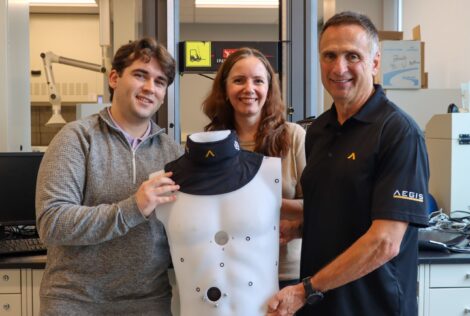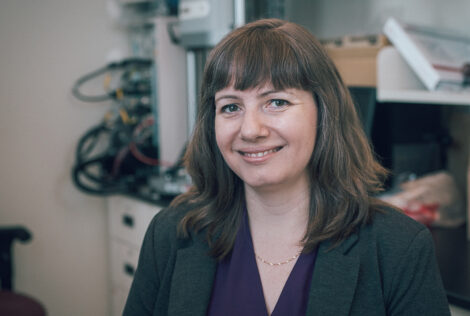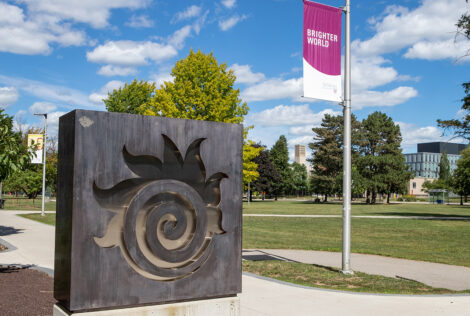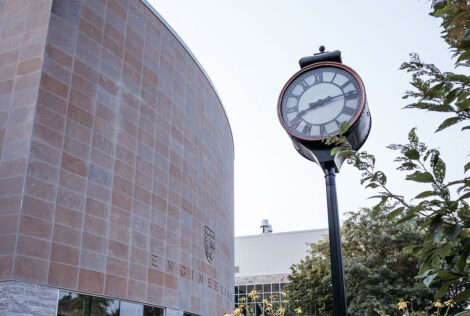
Expertise
Biomechanics
Areas of Specialization
Research Clusters
Current status
-
Accepting graduate students
-
Associate Chair, Undergraduate
Mechanical Engineering
-
Associate Professor
Mechanical Engineering
Overview
Specific Research Activities:
My research interests are in human biomechanics and biomedical engineering, with a focus on:
- Definition of bone fracture limits and injury tolerances
- Surrogates for biomechanical research, including synthetic bones
- Finite element modelling of bone’s response to loading
- Design of artificial joint replacement and fracture fixation systems
My work in injury biomechanics endeavours to quantify the effect of impact loading on the human body. The goal of this work is to define tolerance limits for bones, and to develop appropriate injury criteria. I am interested in characterizing the effect of factors such as strain rate, angle of load application, gender, age, and protective wear on fracture tolerance. The goal of this work is to establish a more comprehensive understanding of the factors that influence injury risk, for the purpose of improving current safety limits.
A further interest of mine is the evaluation of engineered surrogates for their potential to replace cadaveric specimens for orthopaedic research. These include synthetic bones, which have great appeal in their ease of use and low inter-specimen variability, but need to be validated under both quasi-static and dynamic loading to ensure they appropriately represent the human response. Another device requiring validation is the Anthropomorphic Test Device, the current standard for evaluating injury risk. Relationships between outputs from this device and the corresponding risk of injury need to be established for it to be an appropriate tool for safety assessments.
Finite element analysis (FEA) is a useful tool for assessing injury risk through simulation of various types of loads based on CT scans of bones. Experimental tests can be simulated for both injurious and non-injurious conditions, and through refinement of the properties of the model it can be optimized to represent the natural bone response. These models can then be used for a broad range of injury-prediction analyses, as well as clinically for patient-specific models to evaluate the risk of fracture as the result of trauma such as falls.
My previous research in orthopaedic devices has examined design aspects of joint replacement systems to evaluate their influence on the loading experienced by the host bone after insertion. The goal of this work is to enhance fixation and load transfer of these devices to improve their long-term success. I am also interested in evaluating and improving fracture fixation devices to investigate how optimal healing can be achieved.
B.A.Sc., Queen’s University, 2003; M.Sc., University of Western Ontario, 2005; Ph.D., University of Western Ontario (Biomechanical Engineering), 2009
Recent
- Martinez AA, Chakravarty AB, Quenneville CE. (2018) The Effect of Impulse on the Axial Fracture Tolerance of the Isolated Tibia During Automotive and Military Impacts. Journal of the Mechanical Behavior of Biomedical Materials 78:315-320.
- Amuno S, Al-kaissi A, Jamwal A, Niyogi S, Quenneville CE. (2018) Chronic Arsenicosis in Wild Snowshoe Hares (Lepus Americanus) Breeding Near Yellowknife, Northwest Territories (Canada), Part 2: Manifestation of Bone Abnormalities and Osteoporosis. Science of the Total Environment 612:1559-1567.
- Smolen C and Quenneville CE. (2017) Loading Through a Finite Element Model of the Foot and Ankle in Various Postures. Annals of Biomedical Engineering 45(8):1993-2008.
- Chakravarty AB, Martinez AA, Quenneville CE. (2017) The Injury Tolerance of the Tibia Under Off-Axis Impact Loading. Annals of Biomedical Engineering, 45(6):1534-1542.
- Quenneville CE, Fournier E, Shewchenko N. (2017) The Effect of ATD Lower Leg Surrogate Selection on Impact Mitigating System Evaluation in Low and High-Rate Loading Conditions. Military Medicine 182(9):e1981-e1986.
- Quenneville CE. (2016) Impact Test Methods, in Experimental Methods in Orthopaedic Biomechanics, Zdero R (Ed.), pp. 3-17, Elsevier Publishing, London, UK.Smolen C, Quenneville CE. (2016) The Effect of Ankle Posture on the Load Path Through the Hindfoot. Proceedings of the IMechE Part H: Journal of Engineering in Medicine, 230(11):1024-35.
- Vijayakumar V, Quenneville CE. (2016) The Regional Variations in the Mechanical Properties of Cancellous Bone of the Proximal Tibia Using Indentation Testing and CT Imaging. Proceedings of the IMechE Part H: Journal of Engineering in Medicine, 230(6):588-93.
- Van Tuyl J, Burkhart TA, Quenneville CE. (2016) The Effect of Posture on Forces and Moments Measured in a Hybrid III ATD Lower Leg. Traffic Injury Prevention, 17(4):381-5.
- Muizelaar A, Winemaker MJ, Quenneville CE, Wohl GR. (2015) A Novel Bilateral Plating Technique for Treating Periprosthetic Fractures of the Distal Femur. Clinical Biomechanics, 30(9):921-6.
- Burkhart TA, Quenneville CE, Dunning CE, Andrews DM. (2014) Development and validation of a distal radius finite element model to simulate impact loading indicative of a forward fall. Proceedings of the IMechE Part H: Journal of Engineering in Medicine, 228(3):258-271.










